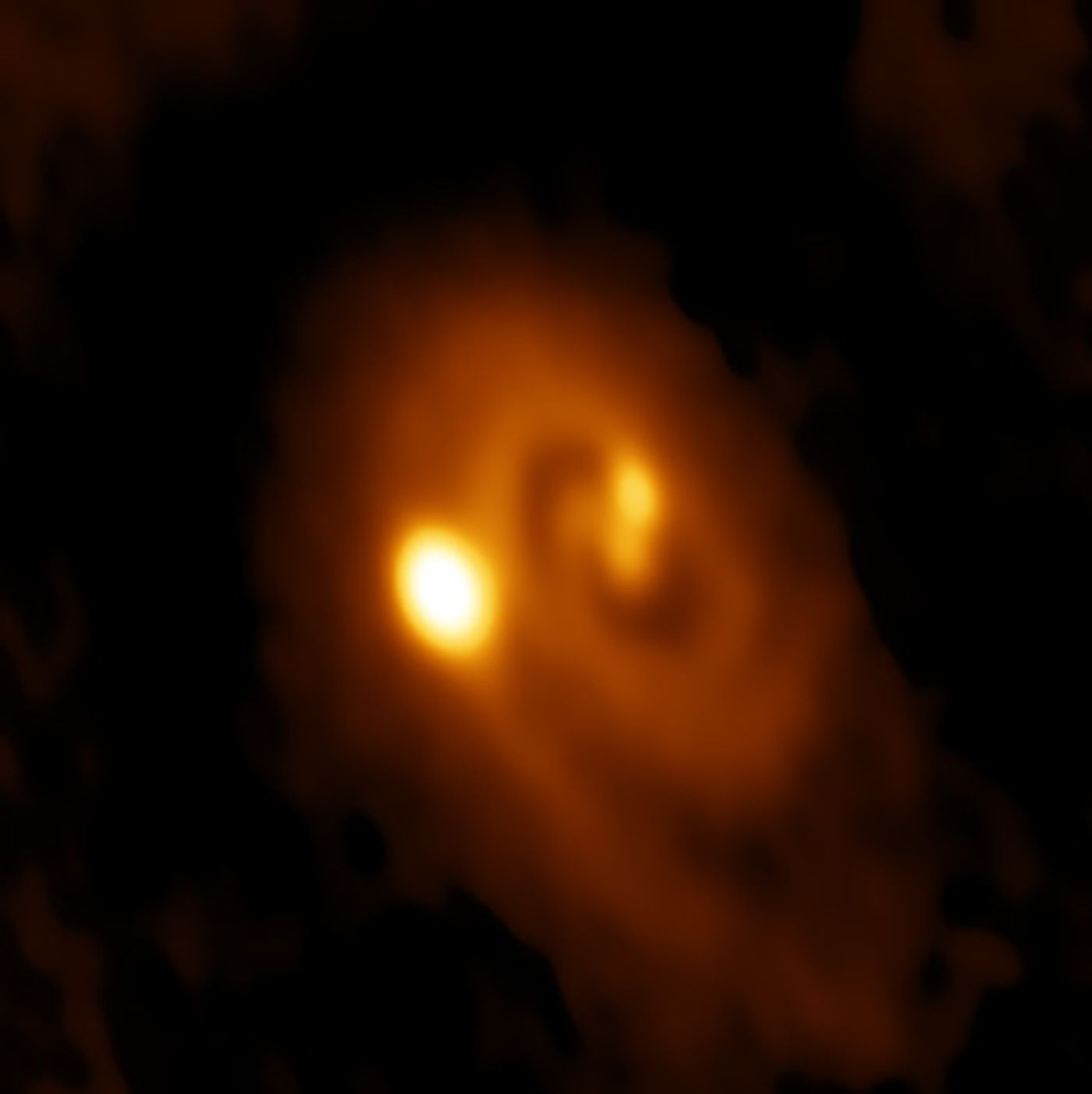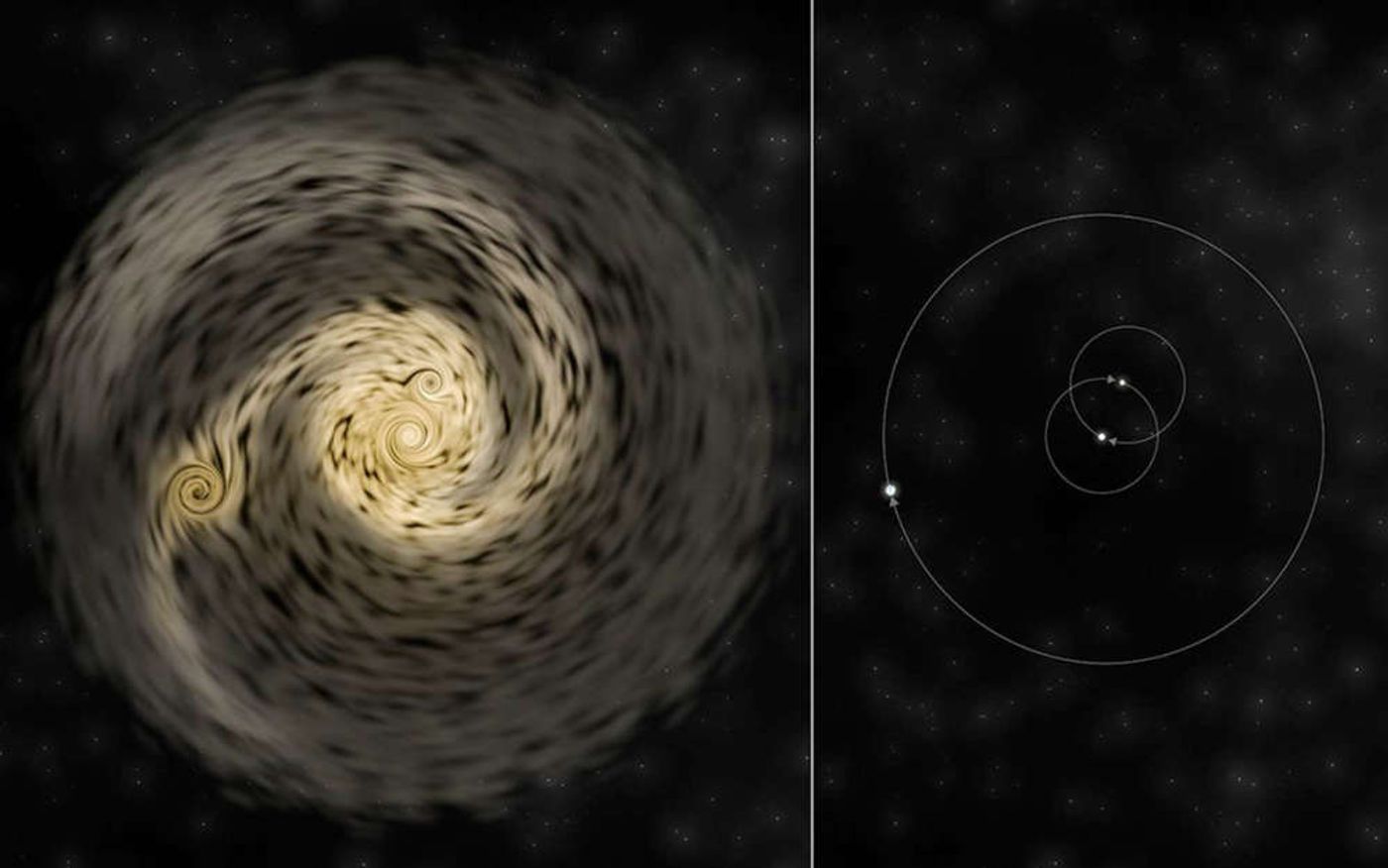Astronomers Observe Formation of Triple Star System for the First Time
It’s not every day that astronomers get the chance to see stars forming in space, but it goes without saying that it’s even rarer to see multiple stars forming in the same system in space.
Although binary systems are actually quite common, triple and even quadruple star systems are a bit rarer. Nevertheless, the only thing rarer than triple and quadruple star systems themselves is the chance to see one of these oddball systems forming out of cosmic dust.
Using the Atacama Large Millimeter/submillimeter Array (ALMA) and the Karl G. Jansky Very Large Array (VLA), astronomers were able to observe such a rare occurrence. Dubbed L1448 IRS3B, the multi-star system formation is taking place right now in a dust cloud in the constellation Pegasus; that’s about 750 light years away from Earth.

Image Credit: Bill Saxton, ALMA (ESO/NAOJ/NRAO), NRAO/AUI/NSF
It’s the first time a multi-star formation has ever been observed by astronomers in the works, and the details are published in the journal Nature.
"This new work directly supports the conclusion that there are two mechanisms that produce multiple star systems -- fragmentation of circumstellar disks, such as we see here, and fragmentation of the larger cloud of gas and dust from which young stars are formed," said John Tobin, of the University of Oklahoma and Leiden Observatory in the Netherlands.
At the center of the system is the formation of one star, and then the other two are forming around the center star. Each of the two outer stars are reportedly 61 and 183 times further from the center star than the Earth is from the Sun.
The dust forming the stars is reportedly takes a spiral shape, and this means to astronomers that it has some instability. Moreover, the system itself is no probably older than about 150,000 years, which is a blink of an eye in universe time.

Image Credit: Bill Saxton, NRAO/AUI/NSF
Because this is the first time astronomers have ever observed a multi-star system in the course of formation, astronomers can effectively conclude that multi-star systems can actually form on their own and aren’t the result of drifting stars.
"We now expect to find other examples of this process and hope to learn just how much it contributes to the population of multiple stars," Tobin said.
Source: NRAO








